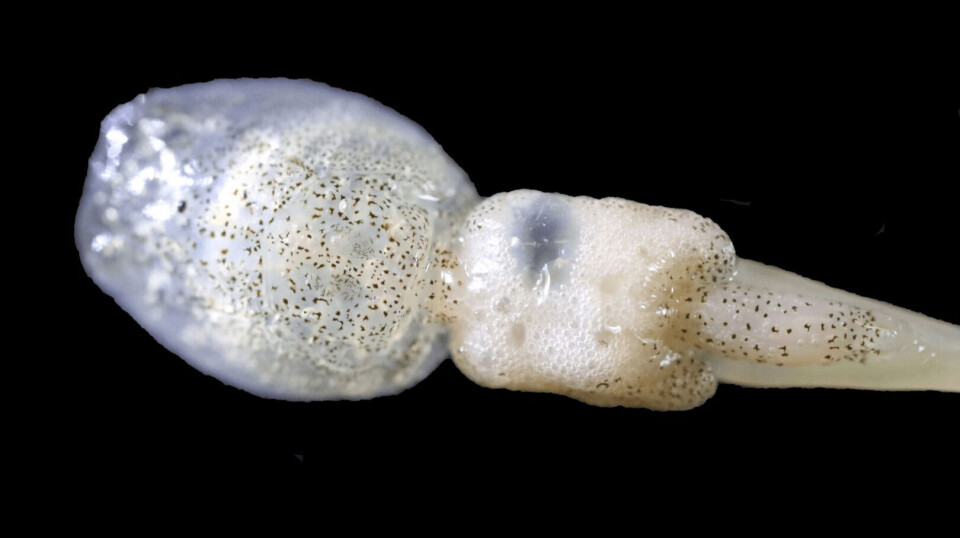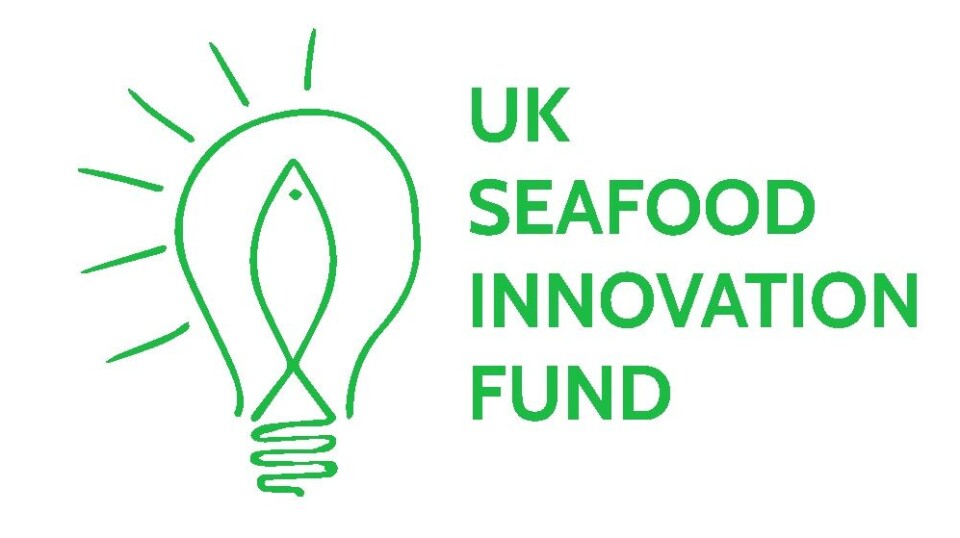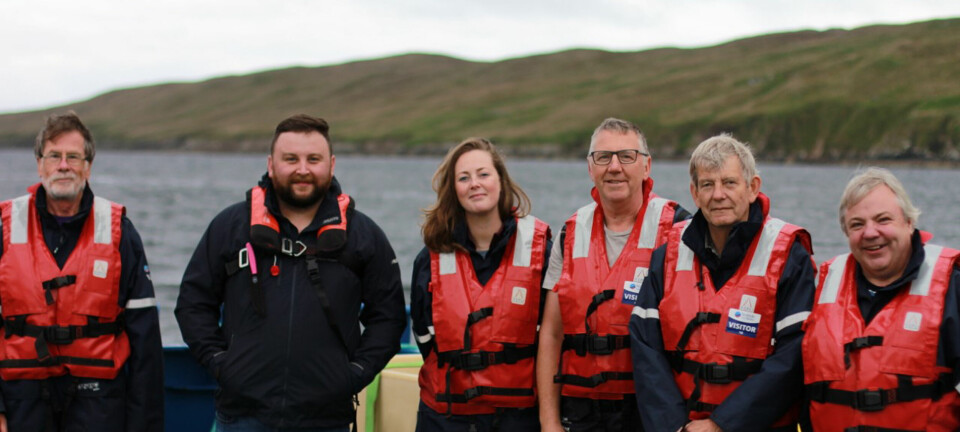
Pulcea granted £540k for add-on lice killer
UK Seafood Innovation Fund backs plan to develop acoustic-boosted hydrogen peroxide treatment that can be carried out in fish-moving pumps
A Scottish company has been granted more than £540,000 from the UK Seafood Innovation Fund (SIF) to find a way of incorporating sound-boosted salmon delousing technology into fish pumps on wellboats, service vessels, or barges.
As part of the UK Government’s wider UK Seafood Fund, SIF aims to secure the future of UK seafood by funding projects with a long-term vision for the industry. Stirling-based Pulcea has spent several years developing the use of acoustic energy to enhance the efficacy of hydrogen peroxide (H2O2) used in tarpaulin bath treatments to kill lice and improve farmed salmon gill health. Using acoustic pulses has also been shown to reduce the dose of H2O2 required.
Whilst Norwegian development partner and Pulcea co-owner Aqua Pharma Group continues work to bring the enhanced bath treatment to market, Pulcea in Scotland is now looking at how the technology can be used in conjunction with state-of-the-art pumps developed to move fish on wellboats as gently as possible.

18-month project
SIF, administered by the Centre for Environment, Fisheries and Aquaculture Science (Cefas) on behalf of the Department for Environment, Food and Rural Affairs (Defra), has granted Pulcea £542,932 for an 18-month project which aims to develop what has been called the Continuous Flow Acoustic Sea-lice Treatment (CFAST). The money will be used to buy a fish pump and a lice filter.
Pulcea managing director Ian Armstrong was inspired to start the new project after attending a conference organised by the Global Aquaculture Technical Hub (GATH) in Ålesund in Norway last September.
“The conference was excellent, and they also had a small exhibition area which included the leading pump manufacturers and their fish welfare specialists. At GATH I discovered that the technology to suitably move fish in a pump is now with us,” says Armstrong.

If you’ve got controlled fish movement through the pump, you can optimise the acoustic pulse and H2O2 dose.
Two leading Norwegian companies, MMC First Process and Cflow, both have pumps that fit the bill.
“If you’ve got controlled fish movement through the pump, you can optimise the acoustic pulse and H2O2 dose, and at the exit of the pump you can size grade, for example,” Armstrong explains. “All the treatment water and the treated lice can be captured.”
The use of acoustic energy and the predictable progress of the fish through the pump mean that a lower-than-standard dose of H2O2 will be used, and adding an enzyme will break down the residual chemical into water and oxygen before the treatment water is discharged.
Pulcea will use their grant money to buy whichever brand of pump it deems most suitable for its test bed but intends that the CFAST technology, once proven at an operational level, will be suitable for any pump model which can reliably achieve optimal standards of live fish handling.
For fish farming's future
Armstrong sees the CFAST as a tool that fits well with the trend for using larger pens and stocking larger post-smolts that will spend less time at sea. Not all fish in larger pens will be ready for harvesting at the same time, he says, and the CFAST would be part of a system of on-board grading and delousing of smaller fish that could be put back into the sea for as little as four to eight weeks to reach their optimum harvest weight.
“We are trying to design something that’s for the farmer of the future, for large smolts; 600g to 1 kilo smolts going into the sea for less than a year. There is probably going to be some size variation, and bigger cages offshore,” he explains.
“If you have fish in a large offshore enclosure your sales team may want you to be able to go in and harvest a selected portion out in a wellboat. Some of the fish might not be quite ready, so you could put them through a pump and put the smaller fish in one hold and large fish straight to harvest.
“If you’re putting fish through this device you’ve got these size grading options, you can carefully remove your cleaner fish, you can take away the lice, you can deactivate the H2O2, or you can run it as a standard pump: you have that flexibility.
“The challenge I’ve given the CFAST project team is to develop a system without altering what the pump does. In other words, the farmer has this pump, and he has a treatment option if he wants it. We are going to build a treatment system as an optional addition to an everyday husbandry task.”
SIF funds 'a game-changer'
By the end of the project Armstrong aims to reach Technical Readiness Level (TRL) 7, which means delivering a system prototype demonstration in an operational environment.
The remaining stages after that (TRL 8 and 9) are to have a system that’s complete and qualified, and then brought to market.
“Having these SIF funds to purchase a pump for our research is a game-changer. We first need to find out which is the best pump, and we’re working with acoustics, so it’s not going to happen straight away,” says Armstrong. “We’re looking for a wellboat owner or a service vessel, or even a barge, to work with. It’s a modular system, so if it’s a large wellboat you might have four of these pumps.”
He sees CFAST as being both an alternative to acoustic energy-enhanced tarpaulin baths, and a useful add-on towards the end of the farming cycle.
Different options
“A tarpaulin bath is good because you’re not handling your fish at all, and you can do a lot of cages. We see two tarpaulin treatment options in a cycle for the modern salmon farmer. Firstly, in the spring, before the wild smolts migrate, because H2O2 also kills the lice eggs, and we can tune the acoustics to target the gravid female lice, so we can treat a lot of fish without pumping.
“Secondly, in the autumn, when the fish may have had a gill-compromised summer, you can give them a reduced H2O2 dose, get a good sea lice kill and help the fish with their gills, and again you are not pumping them.
“So, you have the tarpaulin option, and then you have this new option. Fish health veterinarians and production managers require different options for different circumstances and that is what we aim to deliver for them.”
























































